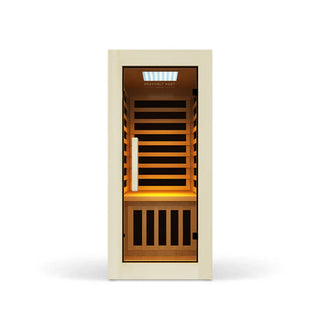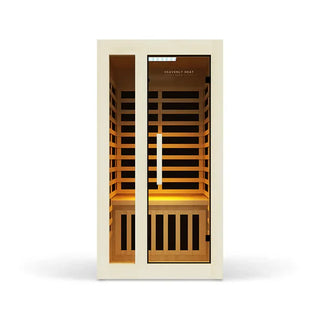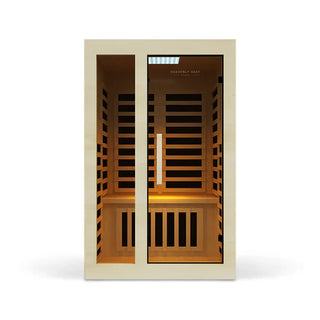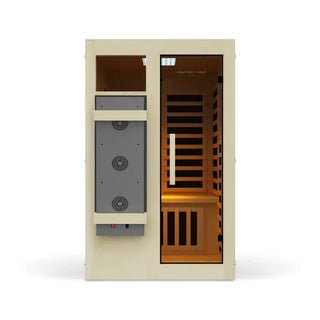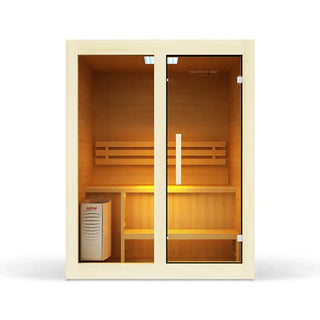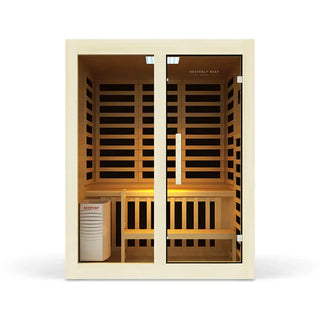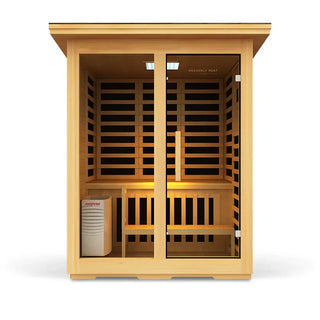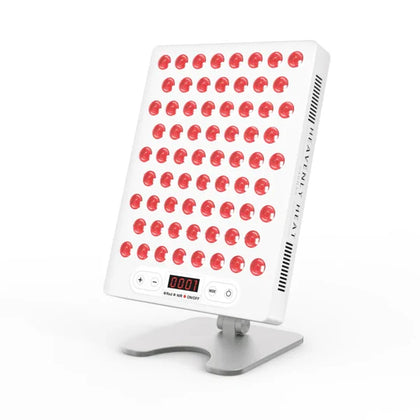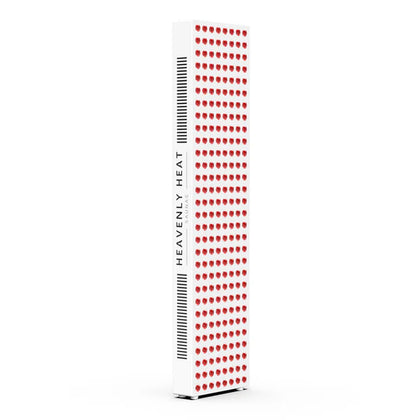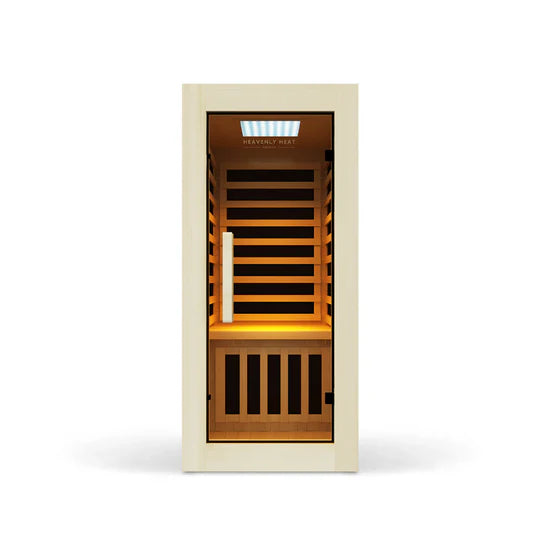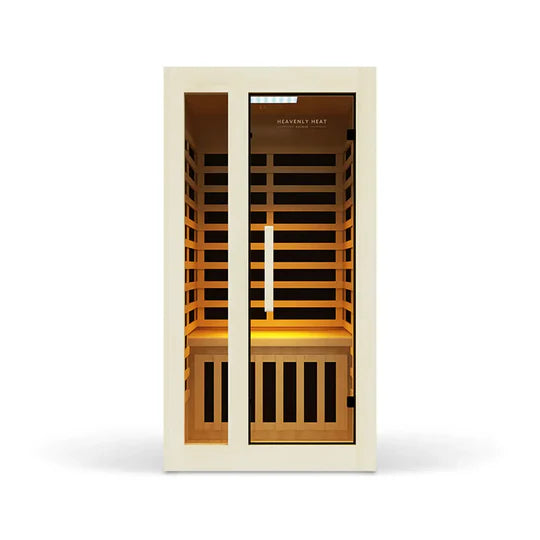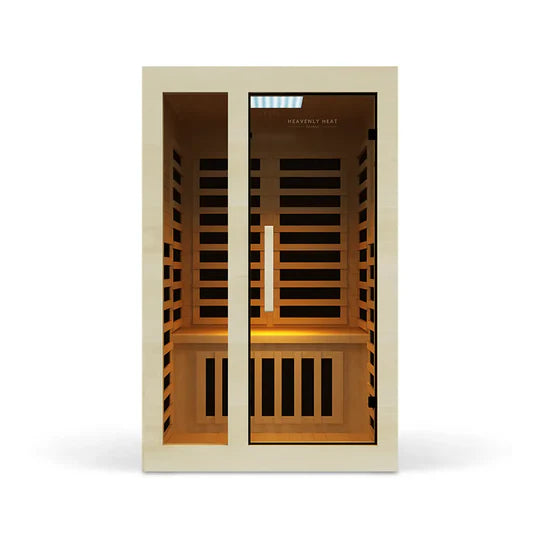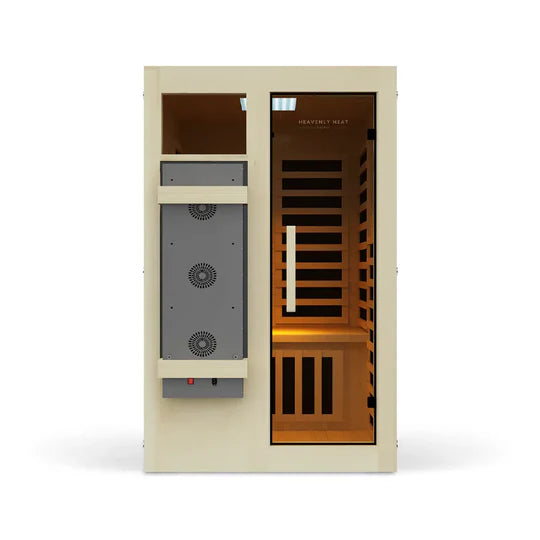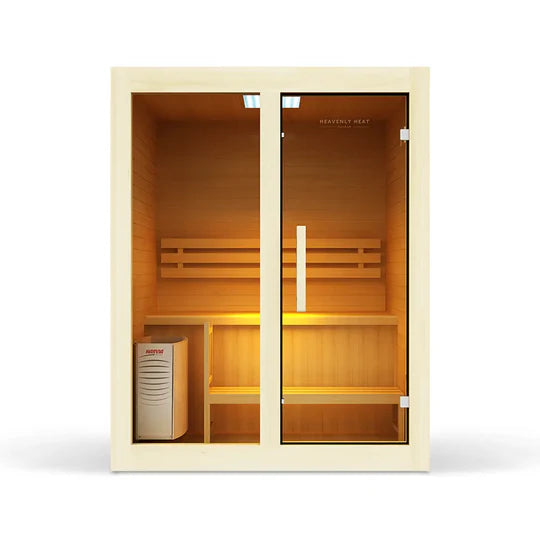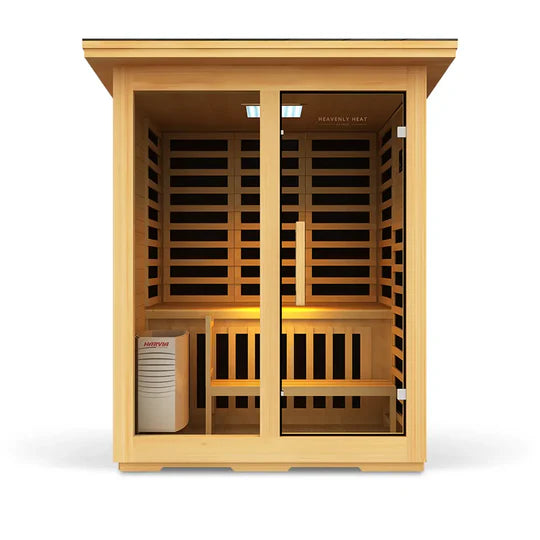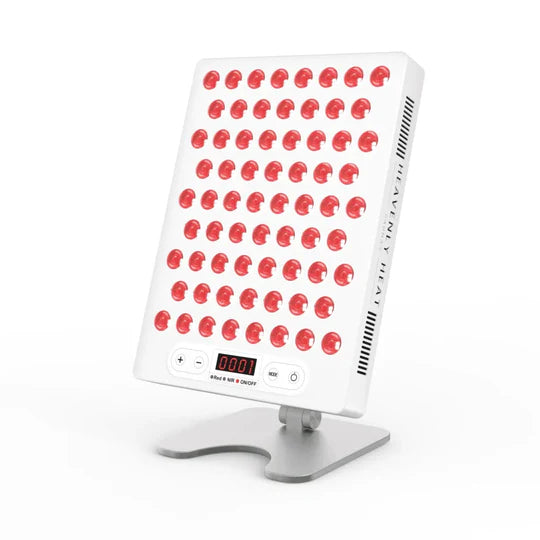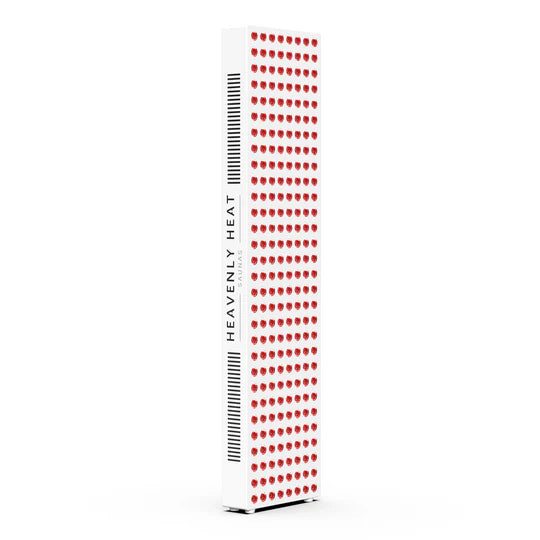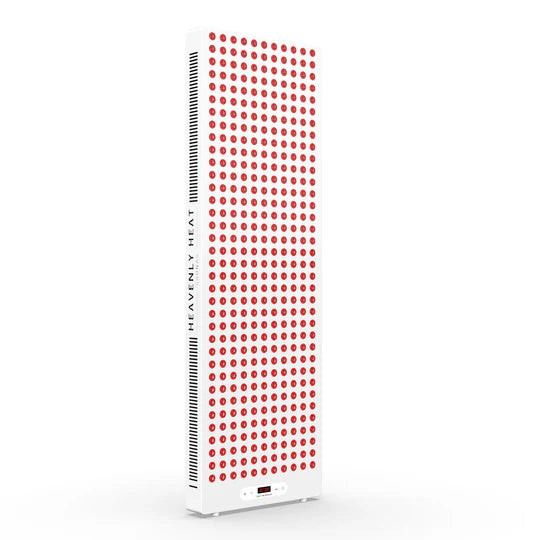The Best Way to Clean a Portable Sauna

Your portable sauna is meant to be a place of relaxation, but without proper cleaning, it can become a breeding ground for bacteria, mold, and bad odors.
Over time, sweat and moisture build up, making it unhygienic. The good news? A simple cleaning routine can keep your sauna fresh, safe, and ready for your next session!
Key Takeaways
-
Regular cleaning prevents bacteria buildup and extends the life of your portable sauna.
-
Wipe down surfaces after each session and do a deep clean weekly.
-
Use natural cleaners like vinegar and baking soda to avoid harsh chemicals.
-
Always dry the sauna after cleaning to prevent mold and mildew.
-
Proper ventilation keeps your sauna fresh and free from lingering odors.
Importance of Cleaning a Portable Sauna
- Cleaning stops germs from growing inside your sauna: A portable sauna is a great way to relax, but without proper cleaning, it can become a breeding ground for bacteria and odors. Sweat , body oils, and moisture create the perfect environment for germs to thrive.
- Keeping it clean helps your sauna last longer: Regular cleaning not only keeps your sauna fresh but also extends its lifespan. A well-maintained sauna ensures you get the most out of your sessions without hygiene concerns.
- Wiping it down often keeps it safe to use: Following a consistent cleaning routine prevents grime buildup and keeps your sauna a safe and enjoyable space.
How Often to Clean a Portable Sauna
Cleaning frequency depends on usage. Wipe down surfaces after each session to remove sweat and oils.
A deeper clean, including disinfecting high-touch areas and washing removable parts, should be done weekly.
Monthly maintenance prevents mold and mildew. If multiple people use the sauna, consider increasing the cleaning routine to prevent bacteria buildup.
Essential Cleaning Supplies
Mild Detergent – Gently cleans surfaces without damage.
Cleans surfaces without damage. A teaspoon in warm water works for light cleaning, while a stronger solution tackles tougher stains
White Vinegar – Natural disinfectant that removes odors.
A natural disinfectant that removes odors and neutralizes bacteria. Avoid using it on natural stone surfaces.
Baking Soda – Tackles tough stains and absorbs moisture.
Tackles stains, absorbs moisture, and deodorizes the sauna. A paste helps remove grime, while dry baking soda keeps humidity under control.
Soft Bristle Brush – Scrubs without scratching.
Scrubs effectively without scratching wood, glass, or ceramic surfaces. Circular motions enhance cleaning.
Microfiber Cloths – Traps dirt and leaves surfaces streak-free.
Trap dirt, leave surfaces streak-free, and are safe for delicate materials like mirrors and stainless steel.
Disinfectant Spray – Kills bacteria and keeps your sauna fresh.
Prevents bacteria growth while keeping the sauna fresh. Choose natural options like tea tree oil or hydrogen peroxide.
Bucket & Mop – Helps with deep cleaning and rinsing.
Add a natural scent and antimicrobial properties. Tea tree, eucalyptus, and lavender work well.
Scrub Sponge – Works for stubborn grime and buildup.
Handles stubborn grime and buildup on non-porous surfaces. Keep separate sponges for different cleaning tasks.
Rubber Gloves – Protects your hands from chemicals and dirt.
Protect hands from detergents and bacteria. Rinse and dry gloves after use to maintain hygiene.
Step-by-Step Cleaning Guide
Step 1: Remove Dirt and Debris
After every session, use a dry or slightly damp microfiber cloth to wipe down benches, walls, and handrails.
This removes sweat and moisture before they can settle. If any spots need extra attention, a mild soap solution or vinegar mixture works well.
Avoid soaking the wood, as excess moisture can cause damage over time. Keeping surfaces dry after use prevents bacteria and mildew from forming.
Step 2: Clean Benches and Walls
Any removable components, such as foot mats, seat covers, or towels, should be washed weekly.
These items absorb sweat and bacteria, making regular cleaning essential. Use mild detergent and let them air dry completely before placing them back in the sauna.
If your sauna has a detachable footpad or cushion, check the manufacturer’s care instructions for the best cleaning method.
Step 3: Disinfect High-Touch Areas
Certain spots, like door handles, control panels, and remote controls, gather the most bacteria.
Spray a gentle disinfectant on a microfiber cloth and wipe these areas thoroughly. Avoid using harsh chemicals that may leave harmful residues. Regular disinfection keeps your sauna hygienic without affecting the materials.
Step 4: Clean the Floor and Drain
Sauna floors accumulate dirt, sweat, and moisture, which can lead to bacteria buildup.
Use a damp mop or microfiber cloth with a mild cleaning solution to remove grime.
If your sauna has a drain, flush it with a vinegar and hot water mixture weekly to prevent blockages. Keeping the floor clean reduces odors and helps maintain overall hygiene.
Step 5: Maintain Sauna Stones and Heater
Good airflow prevents mold and bacteria growth. After each use, leave the sauna door open to let air circulate.
If your sauna has vents, ensure they remain clear of dust and debris. For additional freshness, place activated charcoal or baking soda in a small dish inside the sauna to absorb lingering odors.
Step 6: Prevent Mold and Bacteria
Moist environments encourage mold growth, so controlling humidity is key. Always dry the sauna after cleaning and keep a small gap open for airflow when it’s not in use.
If you notice any mold spots, wipe them down with a vinegar solution immediately. A well-ventilated sauna stays cleaner for longer and prevents the need for deep cleaning too often.
Final Step: Keep Your Sauna Fresh
To maintain a pleasant sauna environment, regularly clean and air it out. Use essential oils for a natural fragrance, and store a small dish of baking soda or activated charcoal inside to absorb moisture and odors.
With consistent upkeep, your sauna will remain in top condition for years of relaxation and health benefits.
Natural vs. Chemical Cleaning Solutions
- Natural cleaners keep your sauna clean without damaging it: Using vinegar, baking soda, or lemon helps remove everyday dirt and grime without harming the sauna’s materials.
- Natural options work well unless the stains are very strong: These gentle cleaners are great for regular use, but they may not be enough for heavy mold or deep-set stains.
- Chemical cleaners clean fast but leave harmful side effects: Bleach and ammonia can kill mold and bacteria quickly, but they often leave behind strong smells and harsh residues that aren’t good for your skin or lungs.
- People with allergies feel safer using natural cleaners: Natural cleaning solutions don’t release strong fumes, making them a better choice for anyone sensitive to chemicals.
- If you clean your sauna regularly, you don’t need strong chemicals: A well-maintained sauna can stay fresh and safe just with natural cleaning and proper care, without needing harsh products.
Common Cleaning Mistakes to Avoid
Avoid Harsh Chemicals
- Using strong chemicals often creates more problems than it solves: Many cleaning products seem powerful, but they can actually cause more harm than good in the long run.
- Chemical cleaners leave behind stuff that can hurt your body: The residue from harsh cleaners can irritate your skin and lungs, making your sauna experience uncomfortable.
- Breathing in these chemicals again and again is bad for your health: If you're exposed to these products frequently, it could lead to serious health issues, especially for people with breathing problems.
- These cleaners slowly damage your sauna without you noticing: Over time, strong chemicals can wear down the materials in your sauna, causing discoloration and weakening surfaces.
- Natural cleaning products do the job without the danger: Simple things like vinegar and baking soda can clean your sauna just as well, without harming your health or the sauna itself.
- If you have kids or pets, staying away from harsh cleaners is even more important: Chemical residues can stick around and pose serious risks to children and animals who come in contact with those surfaces.
Keep Up with Maintenance
- Skipping regular cleaning makes things harder later: When you avoid routine cleaning, dirt keeps piling up and turns small tasks into big ones.
- Storing dirty tools makes your home dirtier: If you don’t clean and store your tools properly, they gather germs and spread them while you clean.
- A dirty vacuum spreads more dust than it removes: Vacuums need cleaning too, if not, they just blow dust back into your home instead of cleaning it.
- Appliances can’t clean well if they’re full of grime: Your washing machine and dishwasher need cleaning too, or they’ll leave things less clean than they should.
- Dirty air filters blow dust back into your home: Old or clogged HVAC filters stop working and let allergens and dust circulate in the air you breathe.
- Clean tools and machines make your job easier: Taking care of your cleaning gear means faster, easier, and better cleaning every time.
Always Dry the Sauna
- Drying the sauna every time keeps it in good shape: A sauna stays in great condition when it’s dried properly after each use. If moisture lingers, it creates the perfect breeding ground for mold and mildew, leading to unpleasant odors and potential health risks.
- Wet wood can get damaged and not last long: Wooden sauna walls absorb excess moisture, which can cause warping and reduce their lifespan if left damp too often.
- Just leaving the door open is not enough to dry it: Leaving the sauna door open helps a little, but it doesn’t do the full job, use a towel to wipe down benches, walls, and other surfaces so no water is left behind.
- A small fan makes drying faster and stops bad smells: For extra protection, consider using a small fan to move air around. It helps dry everything quicker and keeps the sauna smelling fresh, not musty.
Ensure Proper Ventilation
- Poor airflow makes your sauna damp and smelly: When there's not enough ventilation, damp air gets trapped. This causes condensation on the walls, musty smells, and can even lead to mold growing in your sauna.
- Stale air lets cleaning fumes hang around: Without fresh air moving through the space, cleaning fumes stay trapped. Breathing them in can irritate your lungs and make the cleaning process unsafe.
- Mixing cleaners without airflow can be dangerous: If you mix chemical cleaners in a space with bad ventilation, it can release toxic fumes. These are harmful to your health and should be avoided.
- Letting in fresh air makes a big difference: Opening a window, switching on an exhaust fan, or using an air purifier can quickly improve airflow and clear out chemical smells.
- Good airflow keeps your sauna safe and comfortable: Keeping the air moving doesn’t just help with cleaning, it makes your sauna safer and more enjoyable to use.
Don’t Use Too Much Water
- Using too much water can slowly ruin wooden surfaces: Excess moisture makes wooden sauna surfaces swell or crack, which can lead to expensive repairs over time.
- When water gets trapped, mold and mildew will follow: Water seeping into tight spots creates the perfect conditions for mold and mildew to grow, making your space smell bad and feel unhealthy.
- Too much water wears down the grout between tiles: If water sits on tiled surfaces too long, it weakens the grout, which means tiles won’t last as long and may come loose.
- Watered-down cleaners don’t clean properly: When you use too much water, it dilutes your cleaning products, making them less effective at removing dirt and bacteria.
- A damp cloth does the job without the risk: Instead of soaking things, use a damp cloth or spray bottle to clean. It gives you control and keeps moisture where it belongs.


